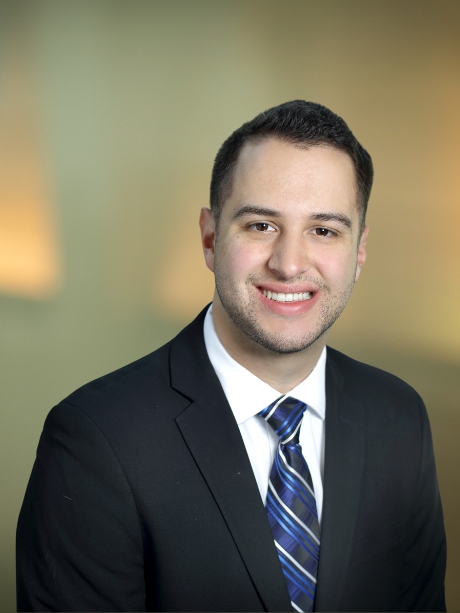Student Spotlight: Sam Fansler
Sam Fansler is a second-year PhD student in the Department of Biostatistics focusing on digital health technologies and aging research.

Sam Fansler is a second-year PhD student in the Department of Biostatistics focusing on digital health technologies and aging research. Sam is the co-leader of the Department’s Computing/Journal Club, which meets weekly to give students and post-docs a chance to give informal presentations to their peers about computation-related topics and/or their current research.
- Hometown: Carlock, Illinois
- Previous degrees earned: BA in Statistics and Music, Butler University; MS in Biostatistics, University of Michigan
- Current Program: PhD
- Program Entry Year: 2023
- Area of Focus: Digital health technologies and aging research
What led you to Hopkins and choosing to study biostatistics?
During my undergraduate studies at Butler University, I got involved in research collaborating with Tara Lineweaver, PhD, in the Department of Psychology to evaluate dementia symptoms at a local nursing home by implementing a music intervention. This experience really excited me about the possibility of using statistics to improve a population’s health, especially older adults.
While pursing my masters in biostatistics at the University of Michigan, I became interested in the power of objective measurement, especially from wearable devices such as accelerometers and heart-rate monitors. These new interests led me to apply to Hopkins Biostatistics. I knew I wanted to come here after Karen Bandeen-Roche, PhD, MS, made the time to meet with me on multiple occasions to discuss the program and how I could continue my pursuit of aging research with the Johns Hopkins Center on Aging and Health.
I have felt a sense of belonging since the moment I started as a student here.
What do you like most about the Biostatistics Department?
The feeling of community and friendliness shared by every member of the Department. Whether it is enjoying conversation with fellow students and faculty during weekly Tea Time, getting overly competitive at the yearly ping pong tournament, or just knocking on a faculty member’s door to grab a coffee, I have felt a sense of belonging since the moment I started as a student here.
What has been your favorite class so far at Hopkins?
The Advanced Methods in Biostatistics sequence. Each class in the sequence was very well structured and contained a good mix of theory and applications. It was one of the more challenging classes for me, but I feel like I grew the most as a statistician from that sequence of courses.
Tell us about a project you are currently working on that you are excited about.
I’m currently working with my advisor Vadim Zipunnikov, PhD, to identify changes in trends of physical activity and sleep across the lifespan using accelerometry data. I am excited to extend this work to combine information from multiple sensors, as well as to find associations between these trends and health outcomes such as cognitive functioning.
Are you involved in any Working Groups? Can you share about one of them and what you enjoy about it.
I am involved in the Wearable and Implantable Technology (WIT) working group, where students and faculty working with wearable devices meet weekly to discuss research in progress and give feedback to each other. Everyone in this working group is extremely curious and passionate about opportunities and problems presented by wearable device data, which creates an inspiring energy about how the field is moving forward.
What advice do you have for incoming students?
Make as many connections as possible with both fellow students and faculty during your time here. Work and study together with your cohort as much as possible; I learned so much just from seeing how other students approach problems. Knock on doors and introduce yourself, you’ll be amazed how easily connections are made.
Can you share why attending this program is important to your career trajectory?
During the first year and a half in this program, I have grown so much as a researcher in biostatistics. I have known for a while now that I want a job that combines research and teaching, and this program provides rigorous training in both. The opportunities for collaboration within the Department, within the School, University wide, and even beyond Hopkins, are limitless. The research opportunities in the community are so abundant and diverse that I feel like I can truly work on any project I find interesting.
What do you enjoy most about Baltimore?
One thing I really enjoy about the city is the love of the local sports teams. I have been a Baltimore Ravens fan since my childhood and have developed into a big Orioles fan since I moved here. The sports teams bring the entire city together, so on game days it is a blast to go out and enjoy the energy. I also enjoy walking around Fells Point with friends and checking out local restaurants and bars.
